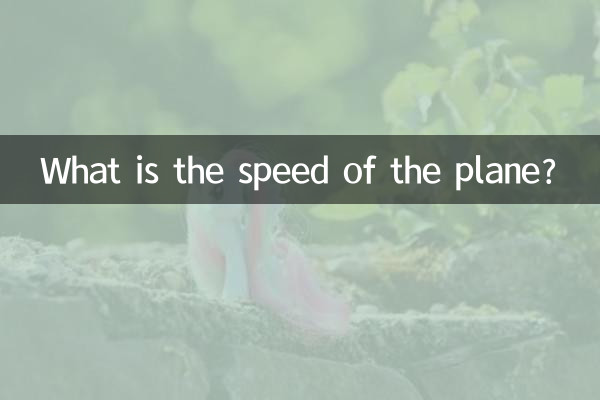What is the speed of the plane?
As an important part of modern transportation, the speed of airplanes has always been a hot topic of concern. In the past 10 days, discussions about aircraft speed have continued to heat up on social media and news platforms, especially the progress of commercial airliners, military aircraft and supersonic flight technology. This article will combine hot topics across the Internet and provide you with a detailed analysis of the speed range of the aircraft in the form of structured data.
1. Speed of commercial airliners

Commercial airliners are the most common type of aircraft in our daily lives, and their cruising speed is usually between 800 and 900 kilometers per hour. The following is a comparison of the speeds of several mainstream commercial airliners:
| Aircraft model | Cruising speed (km/h) | Maximum speed (km/h) |
|---|---|---|
| Boeing 737 | 840 | 876 |
| Airbus A320 | 828 | 871 |
| Boeing 787 | 902 | 954 |
As can be seen from the table, the Boeing 787 has the fastest cruising speed, while the Airbus A320 is relatively slow. These speed figures also explain why faster aircraft are often chosen for long-haul flights.
2. The speed of military aircraft
Military aircraft are much faster than commercial airliners, especially fighter jets and reconnaissance aircraft. The following are the speed data of several famous military aircraft:
| Aircraft model | Maximum speed (km/h) | type |
|---|---|---|
| F-22 Raptor | 2,410 | fighter |
| SR-71 Blackbird | 3,540 | reconnaissance aircraft |
| MiG-25 | 3,000 | Interceptor |
The SR-71 Blackbird is currently the fastest manned aircraft in the world, with speeds exceeding three times the speed of sound. These high-speed capabilities give military aircraft a great advantage on the battlefield.
3. Supersonic and hypersonic flight
Supersonic flight refers to a flight that exceeds the speed of sound (approximately 1,235 km/h). In recent years, hypersonic flight technology (speeds exceeding 5 times the speed of sound) has become a hot topic. Here are the relevant data:
| Technology/Model | Speed(km/h) | state |
|---|---|---|
| Concorde | 2,179 | Retired |
| Boom Overture | 2,335 | Under development |
| hypersonic missile | 6,174+ | experimental stage |
Concorde was the only supersonic airliner in history, but its high operating costs led to its retirement. Currently, new supersonic passenger aircraft such as Boom Overture are under development and are expected to reopen the era of supersonic commercial flight in the future.
4. Factors affecting aircraft speed
The speed of an aircraft is affected by many factors, including:
1.engine thrust: More powerful engines provide higher speeds.
2.air resistance: Airframe design affects air resistance and thus speed.
3.flight altitude: The air at high altitude is thin and the resistance is small, so the plane can fly faster.
4.load: The larger the load, the slower the speed is usually.
5. Future development trends
As technology advances, the speed of future aircraft may further increase. Electric aircraft, supersonic passenger aircraft and hypersonic aircraft are current research focuses. For example, NASA's X-59 silent supersonic aircraft is scheduled to make its first flight in 2024, with the goal of minimizing the noise of supersonic flight.
In short, the speed of aircraft varies depending on the type and purpose. From the subsonic speed of commercial airliners to the supersonic speed of military aircraft, and then to the hypersonic speed of the future, technological progress is constantly pushing the limits of speed. Hopefully the structured data in this article will help you gain a more complete understanding of the world of aircraft speed.

check the details

check the details